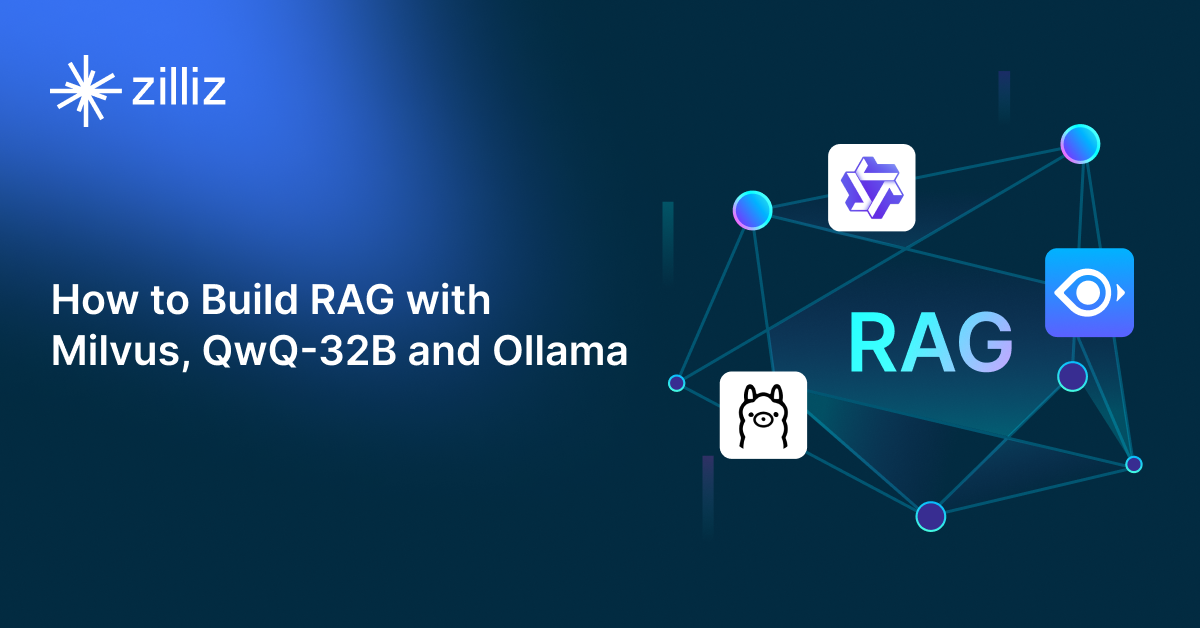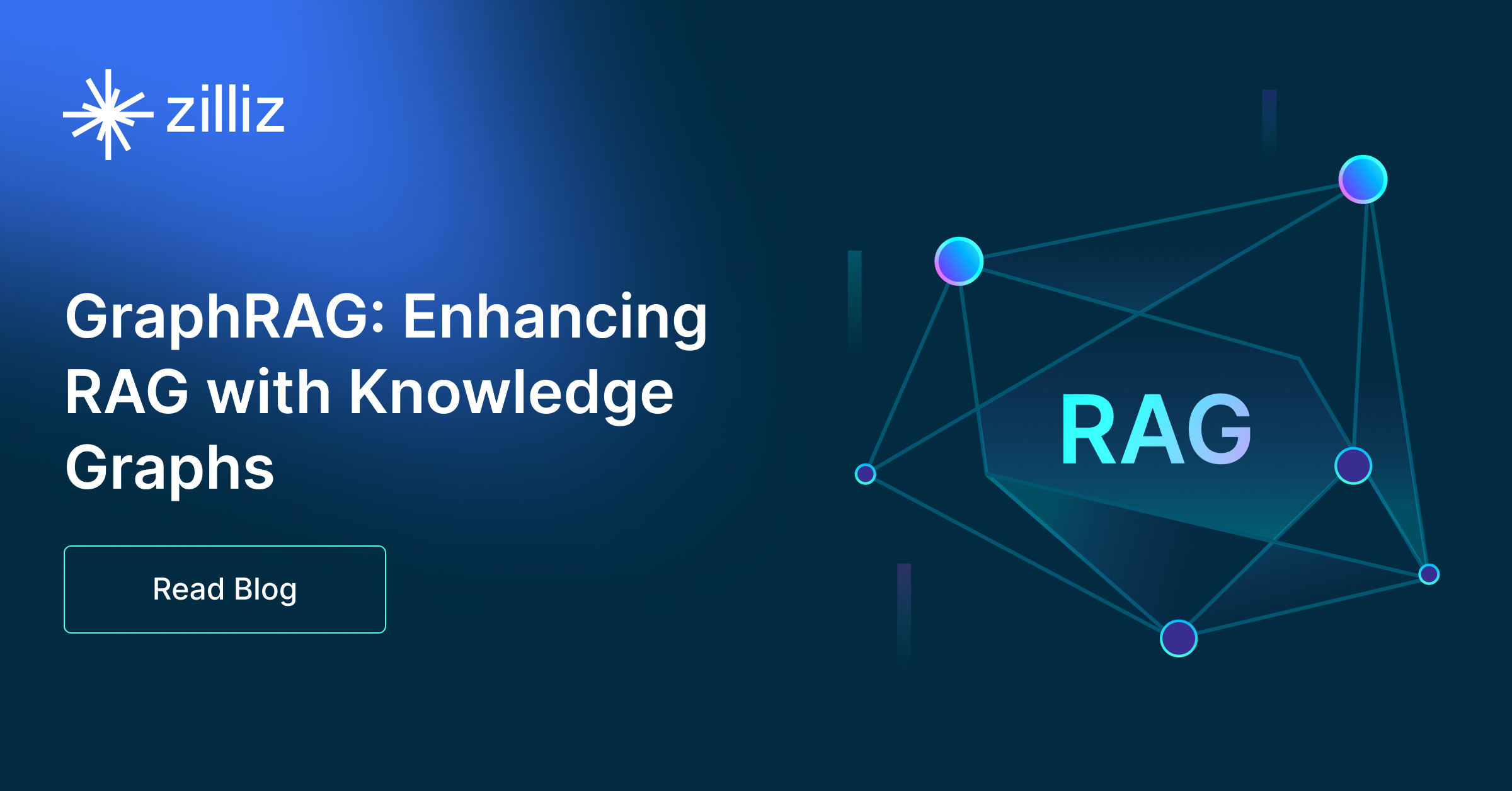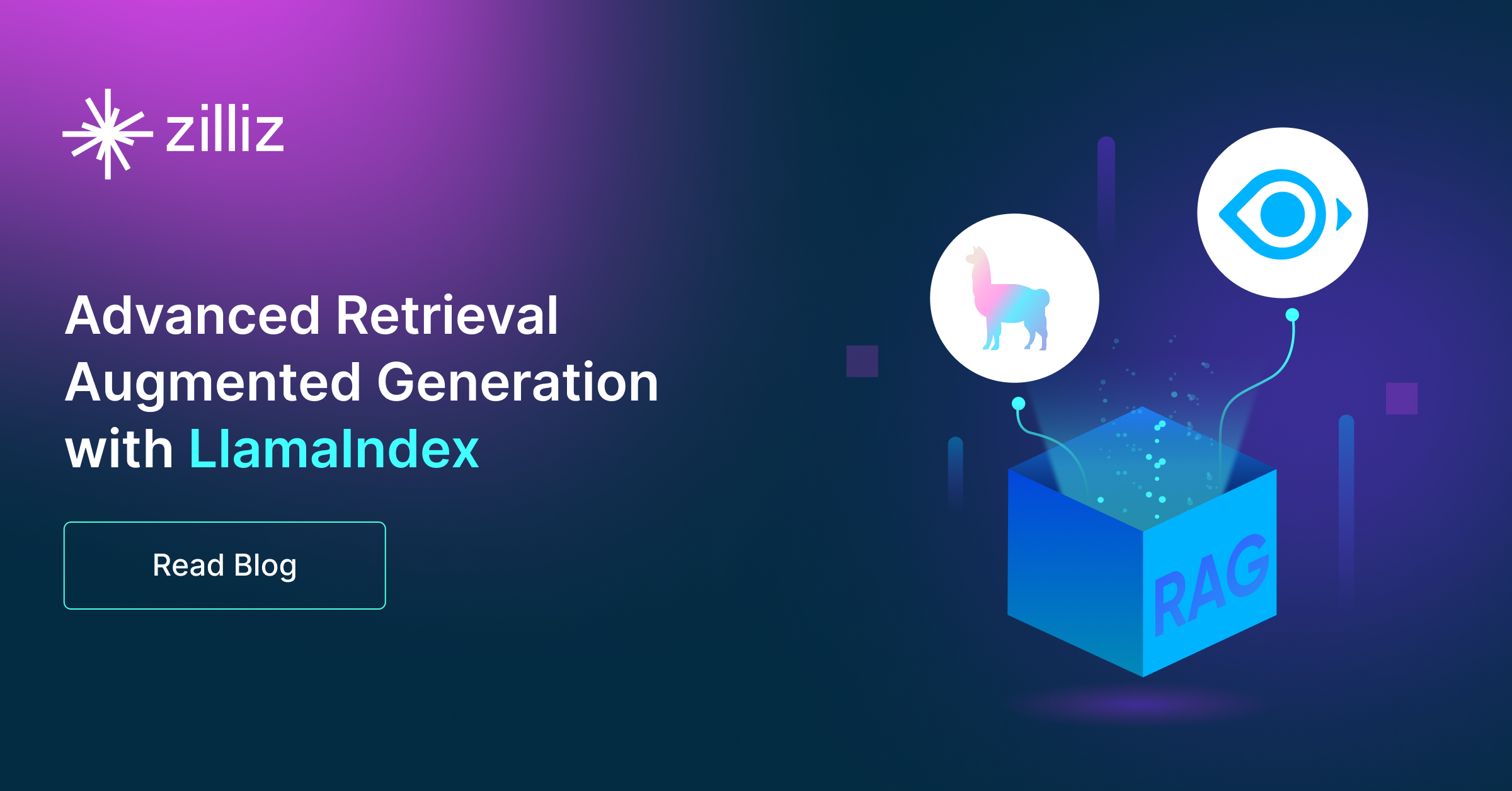Build RAG Chatbot with Haystack, Haystack In-memory store, Amazon Bedrock Claude 3.7 Sonnet, and Ollama nomic-embed-text
Introduction to RAG
Retrieval-Augmented Generation (RAG) is a game-changer for GenAI applications, especially in conversational AI. It combines the power of pre-trained large language models (LLMs) like OpenAI’s GPT with external knowledge sources stored in vector databases such as Milvus and Zilliz Cloud, allowing for more accurate, contextually relevant, and up-to-date response generation. A RAG pipeline usually consists of four basic components: a vector database, an embedding model, an LLM, and a framework.
Key Components We'll Use for This RAG Chatbot
This tutorial shows you how to build a simple RAG chatbot in Python using the following components:
- Haystack: An open-source Python framework designed for building production-ready NLP applications, particularly question answering and semantic search systems. Haystack excels at retrieving information from large document collections through its modular architecture that combines retrieval and reader components. Ideal for developers creating search applications, chatbots, and knowledge management systems that require efficient document processing and accurate information extraction from unstructured text.
- Haystack in-memory store: a very simple, in-memory document store with no extra services or dependencies. It is great for experimenting with Haystack, and we do not recommend using it for production. If you want a much more scalable solution for your apps or even enterprise projects, we recommend using Zilliz Cloud, which is a fully managed vector database service built on the open-source Milvusand offers a free tier supporting up to 1 million vectors.)
- Amazon Bedrock Claude 3.7 Sonnet: A versatile multimodal AI model designed for enterprise applications, excelling in complex reasoning, code generation, and natural language tasks. Known for its balance of speed, accuracy, and cost-efficiency, it is ideal for data analysis, content creation, and scalable automation within AWS-integrated environments.
- Ollama nomic-embed-text: A versatile text embedding model optimized for efficient generation of high-dimensional vector representations, excelling in semantic search, clustering, and similarity analysis. Strengths include robust performance on long-context inputs and scalability for local deployment. Ideal for applications requiring accurate document retrieval, recommendation systems, or contextual understanding in resource-constrained environments.
By the end of this tutorial, you’ll have a functional chatbot capable of answering questions based on a custom knowledge base.
Note: Since we may use proprietary models in our tutorials, make sure you have the required API key beforehand.
Step 1: Install and Set Up Haystack
import os
import requests
from haystack import Pipeline
from haystack.components.converters import MarkdownToDocument
from haystack.components.preprocessors import DocumentSplitter
from haystack.components.writers import DocumentWriter
Step 2: Install and Set Up Amazon Bedrock Claude 3.7 Sonnet
Amazon Bedrock is a fully managed service that makes high-performing foundation models from leading AI startups and Amazon available through a unified API. You can choose from various foundation models to find the one best suited for your use case.
To use LLMs on Amazon Bedrock for text generation together with Haystack, you need to initialize an AmazonBedrockGenerator with the model name, the AWS credentials (AWS_ACCESS_KEY_ID, AWS_SECRET_ACCESS_KEY, AWS_DEFAULT_REGION) should be set as environment variables, be configured as described above or passed as Secret arguments. Note, make sure the region you set supports Amazon Bedrock.
Now, let's start installing and setting up models with Amazon Bedrock.
pip install amazon-bedrock-haystack
from haystack_integrations.components.generators.amazon_bedrock import AmazonBedrockGenerator
aws_access_key_id="..."
aws_secret_access_key="..."
aws_region_name="eu-central-1"
generator = AmazonBedrockGenerator(model="anthropic.claude-3-7-sonnet-20250219-v1:0")
Step 3: Install and Set Up Ollama nomic-embed-text
pip install ollama-haystack
Make sure that you have a running Ollama model (either through a docker container, or locally hosted). No other configuration is necessary as Ollama has the embedding API built in.
from haystack import Document
from haystack_integrations.components.embedders.ollama import OllamaDocumentEmbedder
from haystack_integrations.components.embedders.ollama import OllamaTextEmbedder
text_embedder = OllamaTextEmbedder(model="nomic-embed-text")
document_embedder = OllamaDocumentEmbedder(model="nomic-embed-text")
Step 4: Install and Set Up Haystack In-memory store
from haystack.document_stores.in_memory import InMemoryDocumentStore
from haystack.components.retrievers import InMemoryEmbeddingRetriever
document_store = InMemoryDocumentStore()
retriever=InMemoryEmbeddingRetriever(document_store=document_store))
Step 5: Build a RAG Chatbot
Now that you’ve set up all components, let’s start to build a simple chatbot. We’ll use the Milvus introduction doc as a private knowledge base. You can replace it your own dataset to customize your RAG chatbot.
url = 'https://raw.githubusercontent.com/milvus-io/milvus-docs/refs/heads/v2.5.x/site/en/about/overview.md'
example_file = 'example_file.md'
response = requests.get(url)
with open(example_file, 'wb') as f:
f.write(response.content)
file_paths = [example_file] # You can replace it with your own file paths.
indexing_pipeline = Pipeline()
indexing_pipeline.add_component("converter", MarkdownToDocument())
indexing_pipeline.add_component("splitter", DocumentSplitter(split_by="sentence", split_length=2))
indexing_pipeline.add_component("embedder", document_embedder)
indexing_pipeline.add_component("writer", DocumentWriter(document_store))
indexing_pipeline.connect("converter", "splitter")
indexing_pipeline.connect("splitter", "embedder")
indexing_pipeline.connect("embedder", "writer")
indexing_pipeline.run({"converter": {"sources": file_paths}})
# print("Number of documents:", document_store.count_documents())
question = "What is Milvus?" # You can replace it with your own question.
retrieval_pipeline = Pipeline()
retrieval_pipeline.add_component("embedder", text_embedder)
retrieval_pipeline.add_component("retriever", retriever)
retrieval_pipeline.connect("embedder", "retriever")
retrieval_results = retrieval_pipeline.run({"embedder": {"text": question}})
# for doc in retrieval_results["retriever"]["documents"]:
# print(doc.content)
# print("-" * 10)
from haystack.utils import Secret
from haystack.components.builders import PromptBuilder
retriever=InMemoryEmbeddingRetriever(document_store=document_store)
text_embedder = OllamaTextEmbedder(model="nomic-embed-text")
prompt_template = """Answer the following query based on the provided context. If the context does
not include an answer, reply with 'I don't know'.\n
Query: {{query}}
Documents:
{% for doc in documents %}
{{ doc.content }}
{% endfor %}
Answer:
"""
rag_pipeline = Pipeline()
rag_pipeline.add_component("text_embedder", text_embedder)
rag_pipeline.add_component("retriever", retriever)
rag_pipeline.add_component("prompt_builder", PromptBuilder(template=prompt_template))
rag_pipeline.add_component("generator", generator)
rag_pipeline.connect("text_embedder.embedding", "retriever.query_embedding")
rag_pipeline.connect("retriever.documents", "prompt_builder.documents")
rag_pipeline.connect("prompt_builder", "generator")
results = rag_pipeline.run({"text_embedder": {"text": question}, "prompt_builder": {"query": question},})
print('RAG answer:\n', results["generator"]["replies"][0])
Optimization Tips
As you build your RAG system, optimization is key to ensuring peak performance and efficiency. While setting up the components is an essential first step, fine-tuning each one will help you create a solution that works even better and scales seamlessly. In this section, we’ll share some practical tips for optimizing all these components, giving you the edge to build smarter, faster, and more responsive RAG applications.
Haystack optimization tips
To optimize Haystack in a RAG setup, ensure you use an efficient retriever like FAISS or Milvus for scalable and fast similarity searches. Fine-tune your document store settings, such as indexing strategies and storage backends, to balance speed and accuracy. Use batch processing for embedding generation to reduce latency and optimize API calls. Leverage Haystack's pipeline caching to avoid redundant computations, especially for frequently queried documents. Tune your reader model by selecting a lightweight yet accurate transformer-based model like DistilBERT to speed up response times. Implement query rewriting or filtering techniques to enhance retrieval quality, ensuring the most relevant documents are retrieved for generation. Finally, monitor system performance with Haystack’s built-in evaluation tools to iteratively refine your setup based on real-world query performance.
Haystack in-memory store optimization tips
Haystack in-memory store is just a very simple, in-memory document store with no extra services or dependencies. We recommend that you just experiment it with RAG pipeline within your Haystack framework, and we do not recommend using it for production. If you want a much more scalable solution for your apps or even enterprise projects, we recommend using Zilliz Cloud, which is a fully managed vector database service built on the open-source Milvusand offers a free tier supporting up to 1 million vectors
AmazonBedrock Claude 3.7 Sonnet optimization tips
Optimize Claude 3.7 Sonnet in RAG by preprocessing data to remove noise, using semantic chunking (512-1024 tokens) with overlap for context continuity. Adjust temperature (0.3–0.6 balances creativity) and max_tokens to control response length. Structure prompts with clear instructions and retrieval context placement. Cache frequent queries and embeddings to reduce latency. Apply metadata filters during retrieval to improve relevance. Monitor precision/recall via built-in metrics and tweak retrieval thresholds. Use batch inference for cost efficiency and parallelize document processing. Test varying chunk sizes, top-k retrievals, and system prompts to balance accuracy, speed, and operational costs.
Ollama nomic-embed-text optimization tips
To optimize Ollama nomic-embed-text in RAG, ensure input text is preprocessed (normalize casing, remove redundant whitespace) and chunked into coherent segments matching the model’s optimal context window. Use batch inference for bulk embeddings to reduce latency, and leverage GPU acceleration if available. Fine-tune embedding dimensions via dimensionality reduction if retrieval speed is critical. Regularly validate embedding quality with domain-specific benchmarks, and cache frequently queried embeddings to minimize redundant computations. Adjust temperature and similarity thresholds during retrieval to balance precision and recall.
By implementing these tips across your components, you'll be able to enhance the performance and functionality of your RAG system, ensuring it’s optimized for both speed and accuracy. Keep testing, iterating, and refining your setup to stay ahead in the ever-evolving world of AI development.
RAG Cost Calculator: A Free Tool to Calculate Your Cost in Seconds
Estimating the cost of a Retrieval-Augmented Generation (RAG) pipeline involves analyzing expenses across vector storage, compute resources, and API usage. Key cost drivers include vector database queries, embedding generation, and LLM inference.
RAG Cost Calculator is a free tool that quickly estimates the cost of building a RAG pipeline, including chunking, embedding, vector storage/search, and LLM generation. It also helps you identify cost-saving opportunities and achieve up to 10x cost reduction on vector databases with the serverless option.
 Calculate your RAG cost
Calculate your RAG cost
What Have You Learned?
By diving into this tutorial, you’ve unlocked the power to build a cutting-edge RAG system by seamlessly weaving together four essential tools: Haystack as your orchestration framework, Haystack’s In-memory Store for lightning-fast vector storage, Amazon Bedrock’s Claude 3 Sonnet as your brilliant LLM, and Ollama’s nomic-embed-text to transform text into rich embeddings. You now understand how Haystack acts as the glue, connecting retrieval and generation steps while letting you prototype quickly. The in-memory vector database shines with its speed and simplicity, perfect for testing ideas without infrastructure headaches. Ollama’s embedding model gives you granular control over text representations, ensuring your system understands context deeply, while Claude 3 Sonnet delivers human-like, accurate responses—proving why it’s a top choice for real-world applications. Together, these pieces form a pipeline that retrieves precise information and generates answers that feel both intelligent and natural, all while keeping costs and complexity in check.
But wait—there’s more! You’ve also picked up pro tips for optimizing your RAG system, like tweaking chunk sizes for better retrieval or balancing speed and accuracy. And that free RAG cost calculator? It’s your secret weapon for making smart, budget-friendly decisions as you scale. Imagine what’s next: refining your pipeline, experimenting with different models, or even integrating custom data sources. The skills you’ve gained aren’t just theoretical; they’re a launchpad for creating solutions that could transform industries, enhance user experiences, or solve problems you’re passionate about. So go ahead—build something bold, iterate fearlessly, and let your creativity run wild. The future of AI-powered applications is yours to shape, and this tutorial is just the beginning. Let’s get building! 🚀
Further Resources
🌟 In addition to this RAG tutorial, unleash your full potential with these incredible resources to level up your RAG skills.
- How to Build a Multimodal RAG | Documentation
- How to Enhance the Performance of Your RAG Pipeline
- Graph RAG with Milvus | Documentation
- How to Evaluate RAG Applications - Zilliz Learn
- Generative AI Resource Hub | Zilliz
We'd Love to Hear What You Think!
We’d love to hear your thoughts! 🌟 Leave your questions or comments below or join our vibrant Milvus Discord community to share your experiences, ask questions, or connect with thousands of AI enthusiasts. Your journey matters to us!
If you like this tutorial, show your support by giving our Milvus GitHub repo a star ⭐—it means the world to us and inspires us to keep creating! 💖
- Introduction to RAG
- Key Components We'll Use for This RAG Chatbot
- Step 1: Install and Set Up Haystack
- Step 2: Install and Set Up Amazon Bedrock Claude 3.7 Sonnet
- Step 3: Install and Set Up Ollama nomic-embed-text
- Step 4: Install and Set Up Haystack In-memory store
- Step 5: Build a RAG Chatbot
- Optimization Tips
- RAG Cost Calculator: A Free Tool to Calculate Your Cost in Seconds
- What Have You Learned?
- Further Resources
- We'd Love to Hear What You Think!
Content
Vector Database at Scale
Zilliz Cloud is a fully-managed vector database built for scale, perfect for your RAG apps.
Try Zilliz Cloud for Free


